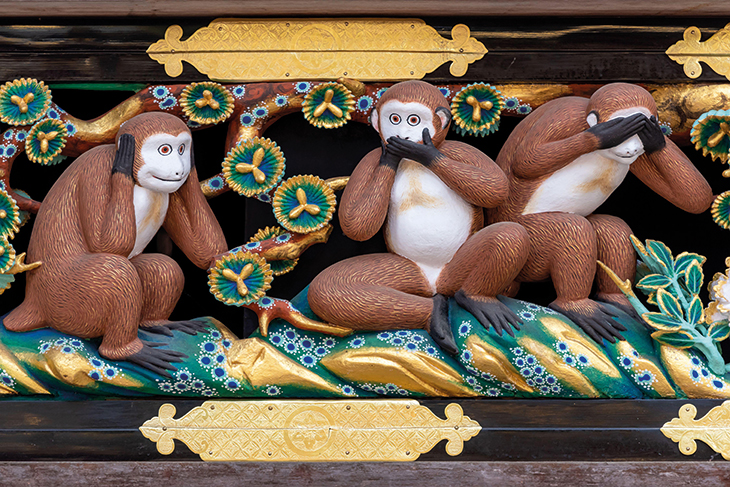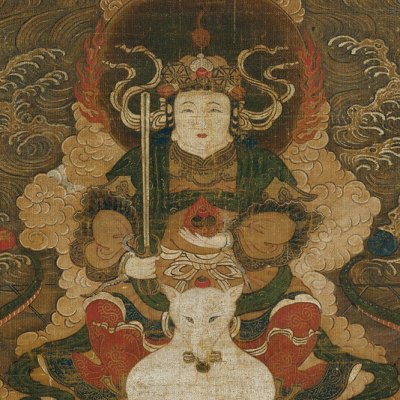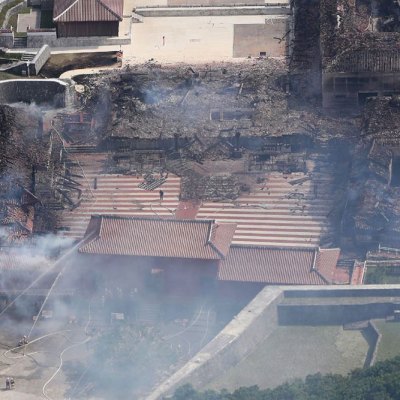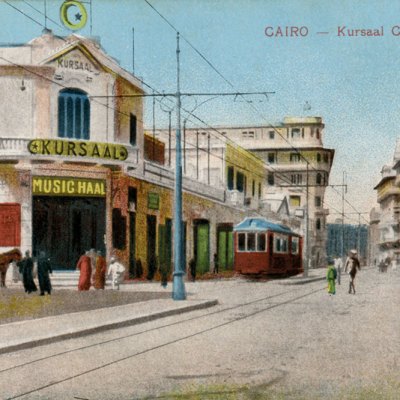Italians say ‘See Naples and die’; Iranians say ‘Isfahan is half the world’; Japanese say ‘Don’t say kekko (‘enough’) until you’ve seen Nikko’. This ancient temple-shrine complex – brought to its glorious present appearance in 1636 – lies due north of Tokyo, some two hours by train. Guided by no more than a compass you could walk there, leaving the shogun’s castle (now the Imperial Palace), needle pointing north, and arrive four days later. I did once walk the historic highway – not quite a straight line, of course. Throughout East Asia, north is the vector of kingship. North is also where the Pole Star is. Nikko, now a World Heritage Site, is a place to which people have always flocked in large numbers.
Perched on a mountainside, Nikko comprises a collection of both Buddhist temples and Shinto shrines. Above all, it has one magnificent shrine-temple. This is nothing to be surprised at, since historically Shinto – Japan’s indigenous religion – was assimilated into Buddhism: its eight million gods concord with Buddhism, and some are even Buddhist monks; others are avatars (emanations) of Buddhas. The centuries-long symbiosis was terminated in the 19th century, creating the two separate religions we have today. In towns throughout Japan the local temple and the local shrine sit side by side, but separated by a wall, a system imposed in around 1880. Nikko is unusual in that the fusion survives.
The shrine-temple is dedicated to a single, shared divinity. This was once a human being, known in life as Tokugawa Ieyasu. In 1600, he brought Japan out of more than 100 years of civil war. Having destroyed his competitors, Ieyasu demanded the emperor revive for him the defunct title of shogun, or military ruler. Ieyasu died, mission accomplished, in 1616. Under his descendants, Japan enjoyed peace for 250 years, which was genuinely extraordinary given the number of wars in earlier Japanese history.
The history of Nikko, briefly, is this: in 767 a monk named Shodo came here to undergo austerities, but his passage was impeded by a raging river. As he pondered, so the story goes, two serpents appeared and intertwined themselves across the water, allowing him to cross. Shodo knew that he had found where he should build his cell when auspicious purple clouds rose up. He built a more permanent bridge over the river and, as his reputation spread, other monks came. A mass of small sites for religious observance grew up, known as the Temple of Myriad Vows.
The Abbot’s Garden at Nikko. Photo: the author

The best part of a millennium later, Tokugawa Ieyasu breathed his last in a sumptuous retirement palace at the foot of Mount Fuji. Struggles ensued for control of his corpse, and its huge potential as a magnet for pilgrims. It was the abbot of the Temple of Myriad Vows, Tenkai, who proved best at arm-twisting, and the remains were brought to Nikko.
Tenkai declared Ieyasu a Shinto god and, after advice, assigned the name of Radiance of the East – meaning the sun. (This was controversial: the emperor was Japan’s solar king, descended from the sun god or goddess; Tenkai argued the name was given only because Nikko happens to mean ‘sunlight’, but Kyoto was not amused.) This Radiance of the East was an avatar and so needed a Buddha from which to emanate. The Buddha of Medicine was selected. Tenkai secured the construction of an impressive compound to both the Shinto god Radiance of the East, and the Buddha of Medicine. We know little about the buildings. In Japanese Buddhism, repeat funerary events are held, with an important one on the 21st anniversary (counted inclusively, so by Western calculations the 20th). For this, Ieyasu’s grandson, now ruling, dismantled and rebuilt Nikko bigger and better. The resulting architectural ensemble from 1636 did his ancestor proud – to the tune, it is said, of half Ieyasu’s treasury.
Important is another, later anniversary: Ieyasu’s 400th, in 2015. In preparation, the Japanese government began a full restoration project at Nikko, with a budget of 1.3bn yen (some £9.5m). The work was so intricate that there was little hope of it being finished by 2016, as intended, and the craftspeople finally downed tools on the main buildings in 2019 (other works are ongoing until 2024). On completion, inevitably, Nikko was oversubscribed with visitors. With the fallout from Covid-19 came the unexpected chance to see the place without its usual jostling crowds.
The Shinkyo Bridge at Nikko. Photo: the author

Having walked from the station up through the town, I came across the bridge, restored to its 1636 appearance. Its vast stone pillars are so firm that no winter flood has ever dislodged them. This is thanks to its engineers, but also, believers would say, to the protection of the god Matara, whose role it is to guard temple structures here. His shrine stands by the bridgehead. Meticulous restoration has made the lacquer superstructure luminous again. Traditionally the 17th-century bridge could not be crossed except by the shogun or his representative; another, concrete bridge spans the river beside it. The visitor then climbs a processional way to the site where a most lavish abbacy once stood; its immaculate garden survives, with a humble yet glorious gazebo. The abbots seldom lived here, for Nikko is remote, and they preferred their alternative accommodation in central Edo. In front of where the abbacy once was is the main hall of the Temple of the Wheel King (former Temple of Myriad Vows). It was relocated here to this less prominent spot in the 19th century; its restoration is immaculate.
The precinct I was aiming for – the Radiance of the East and the Medicine Buddha – lies further on. Visitors pass under a great stone Shinto gate, and enter a terraced hillside. The temple-shrine is up a flight of steps, and through another gateway, this time Buddhist. There are many things to see, but most visitors pause at the stable. The proper gift to a Shinto god is a white horse (today people give photographs and pictures of the animal). In the stable is a real horse, recently returned here after the restoration. Set into panels above the doorways are carved scenes featuring monkeys, traditionally associated with horses. Three stand out: the ‘three wise monkeys’, who ‘see no evil, hear no evil and speak no evil’. It’s a pun, for in Japanese the negative suffix sounds like ‘monkey’, thus ‘do not hear’ and ‘hear monkey’ are about the same.
Carved monkeys in a panel on the facade of the sacred horse stable at Nikko (photo: 2019). Bisual Photo/Alamy Stock Photo

The next important structure is the library, or properly the sutra repository. The Bible is not so long, and even the Qur’an can be memorised; but the Buddhist holy texts (sutras) are legion. No one has ever read them all. They sit in ‘repositories’, gathering dust and lending sanctity to their surroundings. The bookcases can often revolve, and you turn them, as prayer-wheels. Behind this building is the Temple of the Medicine Buddha, with a scintillating dragon ceiling. It will ‘roar’ if you strike clappers beneath its head, as the monks are happy to demonstrate. From here one ascends to the next terrace and the Gate of Solar Brightness. All is searing white, gleaming gold and luminous lacquer: indeed, almost as dazzling as the sun itself. Beyond are the prayer hall and inner sanctum, set behind a fence and floating on wooden joists carved with ducks in meandering water.
Behind this riot of artisanal excellence is the shogun’s grave itself. The last thing you see before approaching this austere place is the carving of a sleeping cat. Ieyasu killed tens of thousands of people. He brought peace with the sword – his peace, that is: everyone else’s was destroyed. Yet what is more peaceful than a sleeping cat? The grave is accessed by long, gruelling flights of steps between trees. Colour is absent. When you come back again, the last things you pass before re-entering the compound are two billing birds: the shogun is not only peace; he is also love. Or so Nikko was built to tell us. I walk back to the station, saying to myself, kekko – yes indeed, what more could I wish to see?
From the November 2020 issue of Apollo. Preview the current issue and subscribe here.


